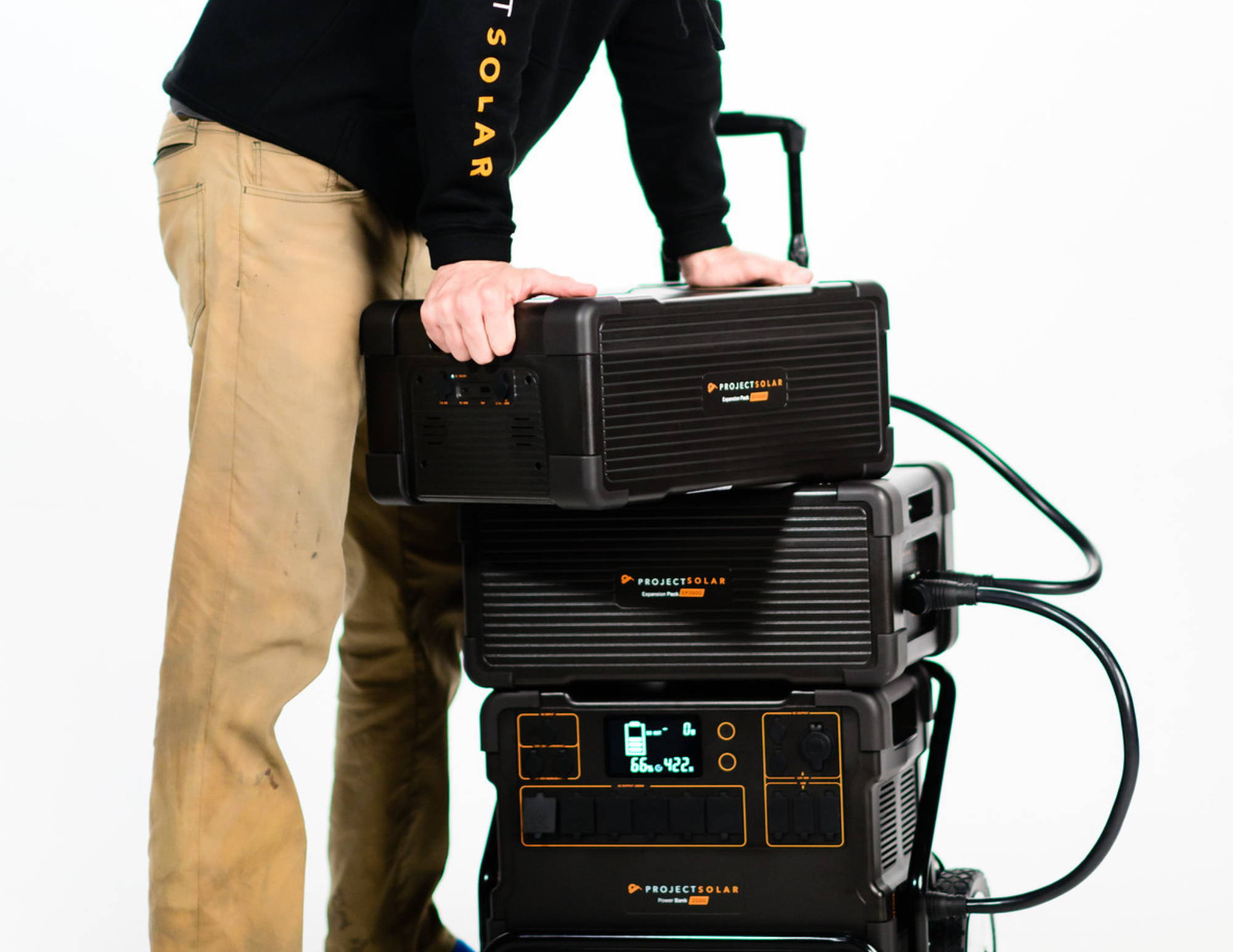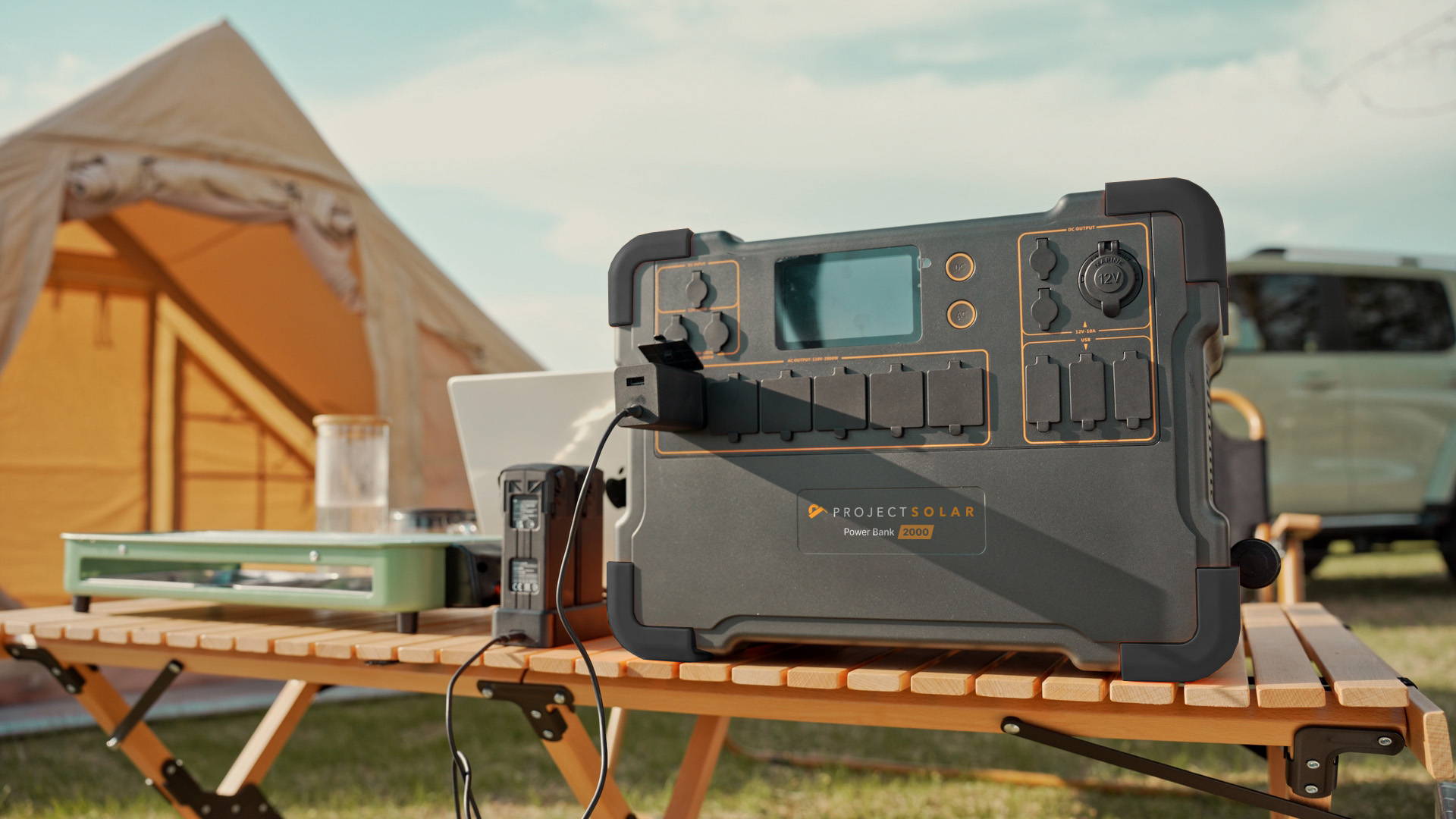Use Cases for the Project Solar Power Bank
Estimated reading time: 7 minutes
Having a backup plan for electricity is a no-brainer in today's world: almost everything we do involves electricity. Plus, with increased extreme weather events, power outages are becoming more and more common.
Integrated solar batteries are one solution to this, and they do a great job, too--especially our top pick, the Enphase IQ 10. If you've read our other blogs, though, you'll know that we don't always recommend batteries with our systems. There are two main reasons for this:
- The best bang for your buck: We created Project Solar to offer an affordable home solar option. Home solar batteries come with a pretty high price tag--they're still rather new to residential solar, and the demand is high. Currently, it's often more cost effective in the long run to not purchase a battery, especially if you have a beneficial net-metering program.
- DIY-ers unite: Offering DIY options has always been non-negotiable at Project Solar, and batteries can complicate an otherwise straightforward solar installation. Installing an integrated battery with your system often requires an install certification from the manufacturer, and the batteries weigh in at almost 350lbs.
We're thrilled to announce a new product to combat these issues: the Power Bank Solar Battery Kit. With an expandable capacity of up to 8,064Wh, this portable battery is a perfect affordable option for DIYers and even off-grid regulars.
The best part about this storage alternative is its versatility: even if you don't have a home solar system, the Power Bank and its accessories can move you one step closer to energy independence.
The Power Bank doesn't just protect you from outages, either--it can also make life in your day-to-day easier, especially if you live off-grid or on the road.
Keep reading to learn the various solutions this battery can provide:
Off-Grid Fun & Life on the Go
In other words, when you use solar to charge your Power Bank it becomes even more portable. The earth's brightest renewable energy source will keep your battery energized on campouts, barbecues, and more. Depending on your expanded capacity and the amount of solar you add, the Power Bank can charge fully in as little as 3 hours.
Why not take a solar-powered excursion to one of our home state's beautiful national parks? We might be biased, but Arches and Zion's are pretty spectacular.

This battery option can be especially beneficial for those that are prohibited from installing a home solar system--manufactured, mobile, and tiny homes, for instance, are not usually structurally eligible for residential solar. When paired with solar panels, the Power Bank is a perfect portable alternative at a great price.

Solar Savings Options for Renters
Project Solar's Power Bank cuts out the middlemen, giving you an independent energy option that you can charge for free with the sun. Using your battery to run smaller appliances and to charge your devices will decrease your grid power use and, in turn, help you lower your utility bill.
Plus, there's no problems if you need to move: just remember to bring your Power Bank with you.
Emergency Outage Preparations & Home Integration
As much as we like to avoid them, emergencies happen, and it's good to be prepared.
In recent years, wildfires, hurricanes, arctic freezes and more have caused extensive damage throughout the US. Just in 2022, the National Centers for Environmental Information (NCEI) reported $165.1 billion in damages from natural disasters.
These disasters have put historic levels of stress on the power grid, and power outages have increased by 64% in the past 10 years when compared to the previous decade.
There are already a few options to provide you with backup and also relieve stress from the power grid--most of which involve a generator powered by natural gas, diesel, or gasoline. The main issue with gas generators is that their fuel needs to be purchased, and with fuel costs skyrocketing as of late, this is not ideal. Gas generators also need to be run outdoors, as they create toxic carbon monoxide fumes.
Conversely, the grid-independent Power Bank is able to both charge and perform indoors or outdoors, in -4 to 113 degree conditions (F). It can be charged from your home, car, or from solar panels.
With standard AC outlets, USB-A ports, USB-C ports, and even a wireless phone charger, you can power almost any standard 120V home appliance while also making sure your devices stay topped up.
These disasters have put historic levels of stress on the power grid, and power outages have increased by 64% in the past 10 years when compared to the previous decade.
There are already a few options to provide you with backup and also relieve stress from the power grid--most of which involve a generator powered by natural gas, diesel, or gasoline. The main issue with gas generators is that their fuel needs to be purchased, and with fuel costs skyrocketing as of late, this is not ideal. Gas generators also need to be run outdoors, as they create toxic carbon monoxide fumes.
Conversely, the grid-independent Power Bank is able to both charge and perform indoors or outdoors, in -4 to 113 degree conditions (F). It can be charged from your home, car, or from solar panels.
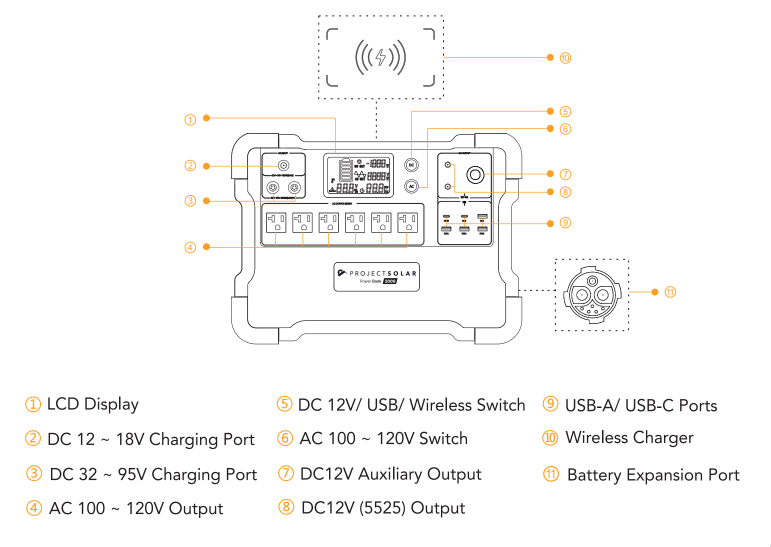
Project Solar Power Bank 2000 | Inputs and Outputs
With standard AC outlets, USB-A ports, USB-C ports, and even a wireless phone charger, you can power almost any home appliance while also making sure your devices stay topped up.

Project Solar Power Bank 2000 | Inputs and Outputs
Home Integration with a Subpanel
If you want to take outage protection one step further, you can directly connect your Power Bank to specific essential loads. Project Solar offers a Transfer Switch SubPanel that can switch your power source from the grid to your Power Bank.
Once your subpanel is installed, all you need to do is plug in your battery and flip a switch, and it's been integrated into your home. You can power lights, outlets, Wi-fi routers, etc. without needing to unplug appliances or use extension cords.
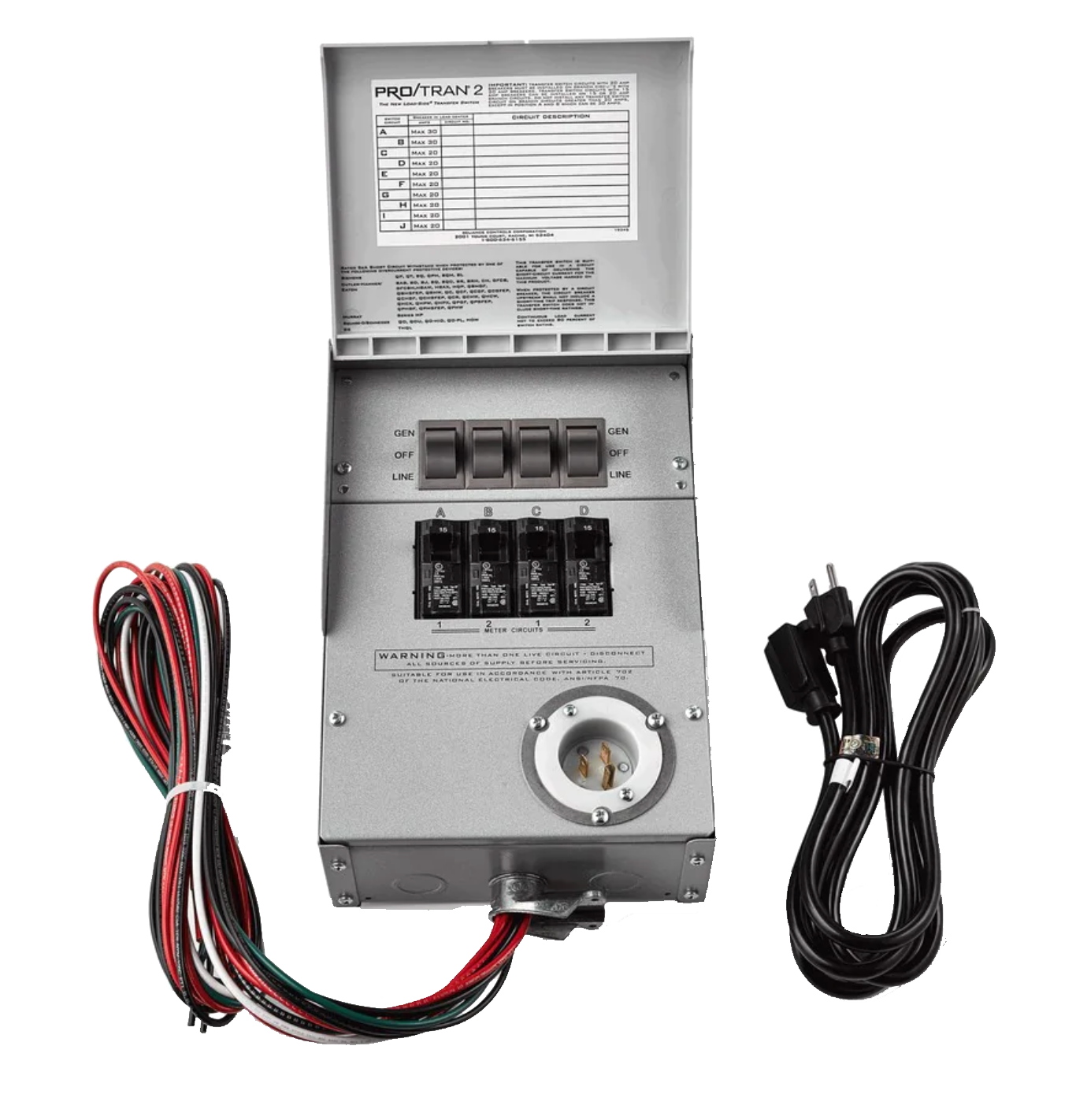
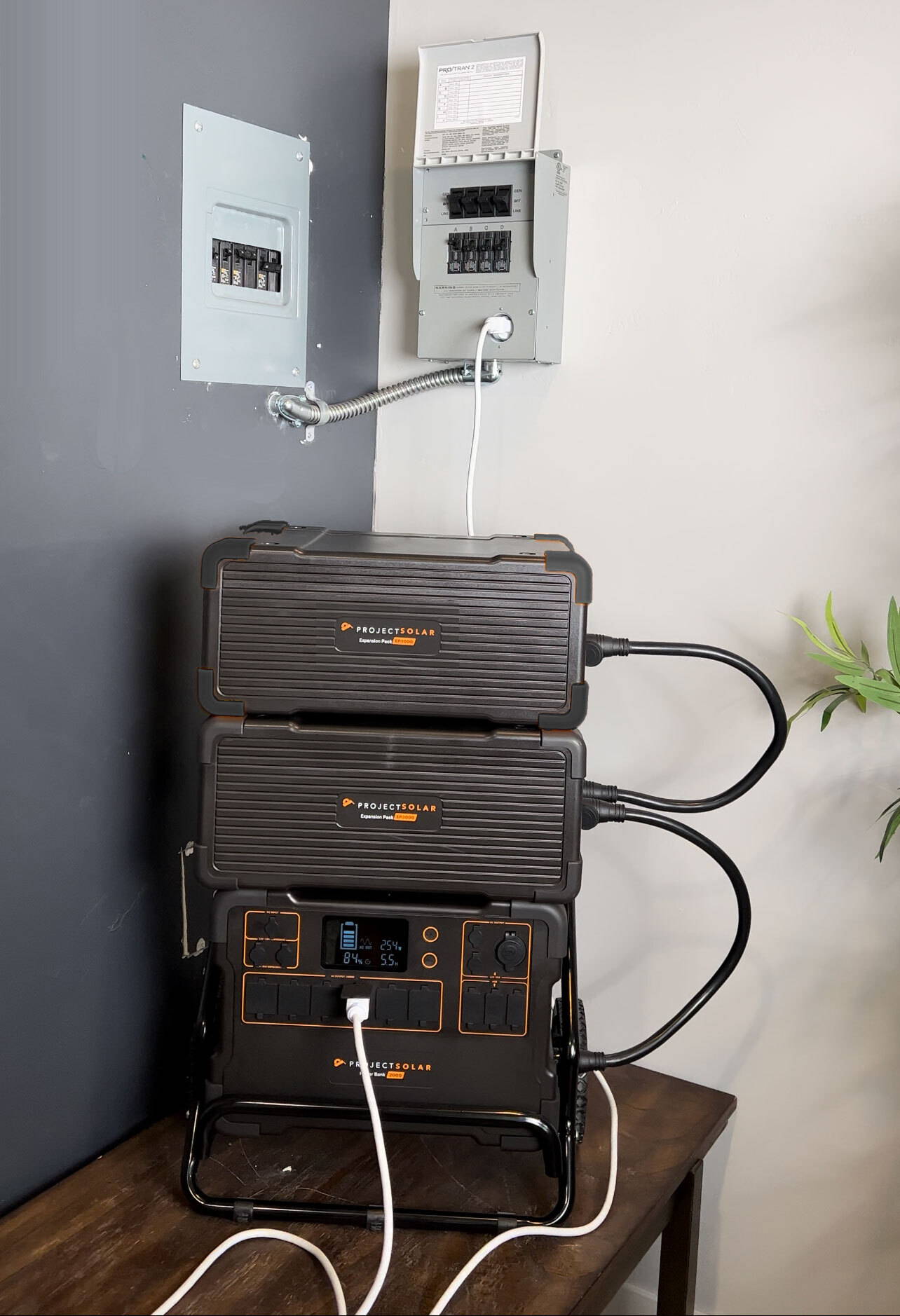
The Bottom Line
Project Solar's Power Bank is a reliable storage solution with many useful capabilities. It can provide electric backup for a variety of situations, including off-grid activities, rented properties/apartments, outages, emergencies, and more.
With more and more natural disasters and a high societal reliance on electricity, having a backup plan is becoming increasingly important in today's world. This kit offers backup and also solar savings options for peace of mind in unpredictable times.
Whether you're looking to charge a lantern in a national park or blow-dry your hair during a power outage, Project Solar's Power Bank is an affordable, accessible, and DIY-friendly solar alternative.
You can view and compare the specifications of our Power Bank models with the graphic below, or you can check out our Equipment Specifications page here.

